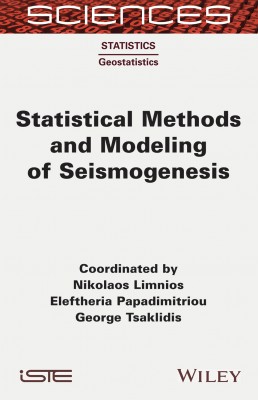
The study of earthquakes is a multidisciplinary field, an amalgam of geodynamics, mathematics, engineering and more. The overriding commonality between them all is the presence of natural randomness.
Stochastic studies (probability, stochastic processes and statistics) can be of different types, for example, the black box approach (one state), the white box approach (multi-state), the simulation of different aspects, and so on. This book has the advantage of bringing together a group of international authors, known for their earthquake-specific approaches, to cover a wide array of these myriad aspects.
A variety of topics are presented, including statistical nonparametric and parametric methods, a multi-state system approach, earthquake simulators, post-seismic activity models, time series Markov models with regression, scaling properties and multifractal approaches, self-correcting models, the linked stress release model, Markovian arrival models, Poisson-based detection techniques, change point detection techniques on seismicity models, and, finally, semi-Markov models for earthquake forecasting.
1. Kernel Density Estimation in Seismology, Stanislaw Lasocki.
2. Earthquake Simulators Development and Application, Rodolfo Console, Roberto Carluccio.
3. Statistical Laws of Post-seismic Activity, Peter Shebalin, Sergey Baranov.
4. Explaining Foreshock and the Båth Law Using a Generic Earthquake Clustering Model, Jiancang Zhuang.
5. The Genesis of Aftershocks in Spring Slider Models, Eugenio Lippiello, Giuseppe Petrillo, François Landes and Alberto Rosso.
6. Markov Regression Models for Time Series of Earthquake Counts, Dimitris Karlis, Katerina Orfanogiannaki.
7. Scaling Properties, Multifractality and Range of Correlations in Earthquake Time Series: Are Earthquakes Random?, Georgios Michas, Filippos Vallianatos.
8. Self-correcting Models in Seismology: Possible Coupling Among Seismic Areas, Ourania Mangira, Eleftheria Papadimitriou, Georgios Vasiliadis and George Tsaklidis.
9. Markovian Arrival Processes for Earthquake Clustering Analysis, Polyzois Bountzis, Eleftheria Papadimitriou and George Tsaklidis.
10. Change Point Detection Techniques on Seismicity Models, Rodi Lykou, George Tsaklidis.
11. Semi-Markov Processes for Earthquake Forecast, Vlad Stefan Barbu, Alex Karagrigoriou and Andreas Makrides.
Nikolaos Limnios is Full Professor of Applied Mathematics at Université de Technologie de Compiègne, Sorbonne University, France. His research interests include stochastic processes and statistics, Markov and semi-Markov processes and random evolutions with varied applications.
Eleftheria Papadimitriou is Professor of Seismology at the Aristotle University of Thessaloniki, Greece. Her research interests are related to Earthquake Seismology and she engages in scientific exchange and collaboration with several international institutions.
George Tsaklidis is Professor of Probability and Statistics at the Aristotle University of Thessaloniki, Greece. His research interests include stochastic processes and computational statistics with applications in seismology, finance and continuum mechanics, and state-space modeling.